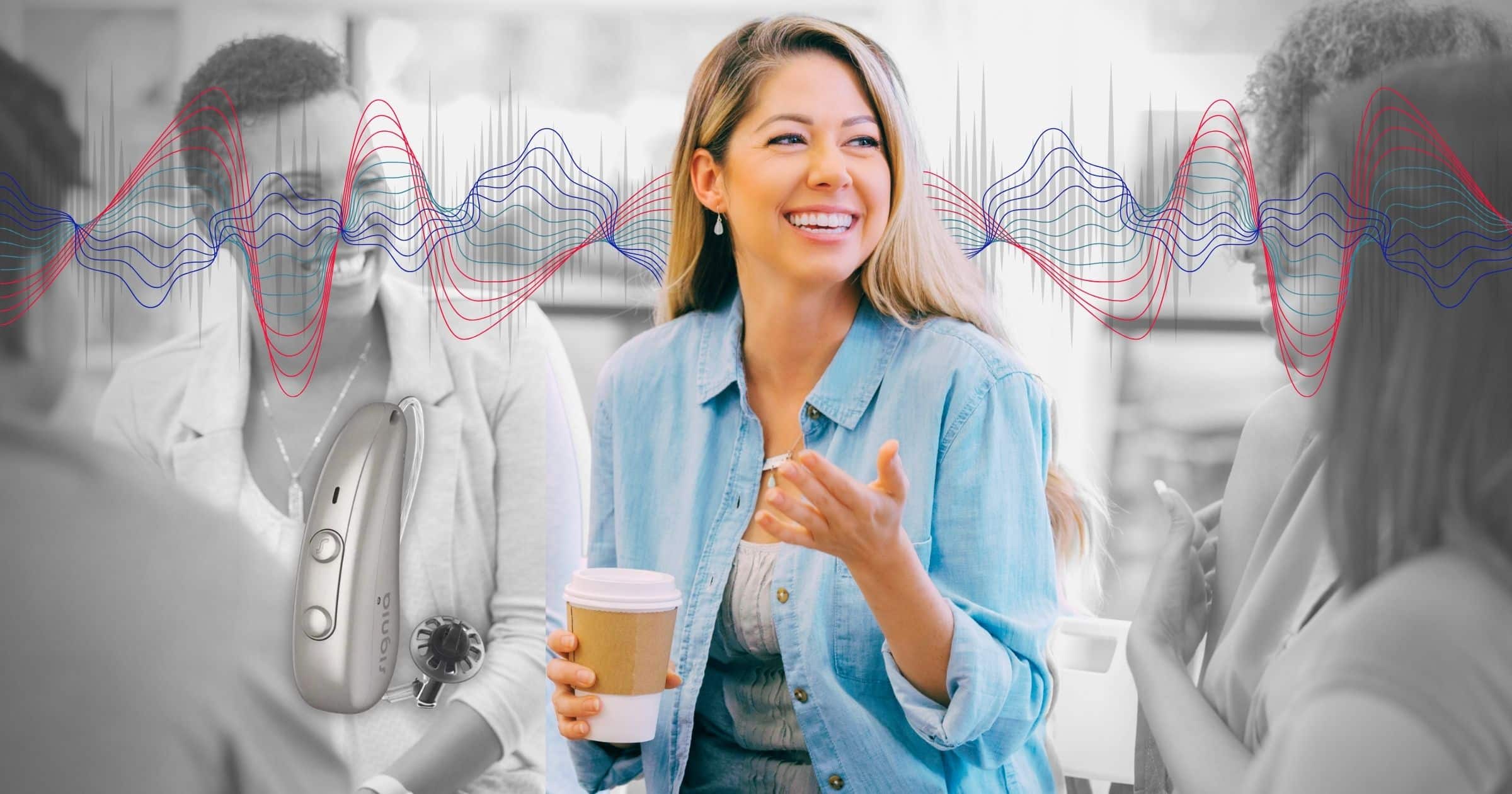by Brian Taylor, AuD, Signia

Brian Taylor, AuD
In the last decade, the perceived benefit of wearing hearing aids has increased significantly. In a 2022 study, the share of people who said their hearing aids improved their quality of life rose to 64 percent, from less than 50 percent in 2015.
And while that’s great news, those who experience hearing loss continue to report an ongoing challenge, whether they wear hearing aids or not: they have a hard time following group conversations. And it’s hardest in the presence of other noise. As audiologists, we know what comes next.
Difficulty engaging in group conversation leaves people fatigued. Some simply withdraw from social situations, risking their physical and cognitive health. Research continues to find that hearing loss can lead to social isolation and cognitive decline because sufferers struggle to communicate with others in everyday, immersive acoustic environments. Ultimately, amplification isn’t enough to overcome this challenge.
Hearing aid technology has come a long way in addressing what we call focused hearing, which is the ability to pick up and enhance the voice of one companion while diminishing background noise, like at a restaurant. The next step is to broaden the concept of focused hearing to include more people, like at a family dinner, book club, or business conference. It’s to improve a hearing aid wearer’s ability to hear in a group, grasp what’s being said, and actively contribute. In this way, hearing aids foster healthier listening.
Toward a Goal of ‘Easy Listening’
Listening is a critical part of good conversation. It entails more than just hearing the words people say. It requires perceiving who’s speaking, when, and from what direction. Audiologists who study listening as it relates to conversation — both one-to-one and in group settings and among adults with normal and impaired hearing — have said the key to “conversation success” in group settings is being able to listen easily, being spoken to in a helpful way, and sharing information.

Many of us don’t even notice this conversation success when it’s happening, but the concept of easy listening involves sensing how a conversational soundscape changes as people approach, leave, or move around us. And it includes compensating for ambient noise that might otherwise compete for our listening focus. For people with hearing loss, all of this requires new advances in hearing aid processing.
It begins with what we at Signia call split processing, which enables a class of hearing aids that can split a soundscape into two channels — a focus channel and a background channel, each handled separately by dedicated processors. Split processing, as implemented in Signia’s Augmented Focus technology, analyzes the two sound channels to determine if they contain information the wearer wants to hear (like the voice of a companion), background information that’s important for understanding the soundscape, or background noise that’s irrelevant and can be suppressed. The streams are then processed appropriately and the wearer experiences far greater speech clarity despite the surrounding noise.
Based on this ability to split sound inputs into separate channels, we’re in a technological position to do what hasn’t yet been possible: improve hearing aid wearers’ engagement in group conversation through a platform that handles more streams.
Signia engineers have developed a solution for splitting the soundscape even further, allowing clearer communication with several different people. We call it Signia Integrated Xperience (IX) with RealTime Conversation Enhancement. This next-generation platform specifically improves group conversation by analyzing the soundscape, sensing speech, and automatically separating voices into several distinct channels for processing. Plus, it preserves the background channel that’s a hallmark of existing, split-processing technology.
Through sensors and directional microphones, the platform examines the conversation setting, identifies primary speakers and secondary speakers and their location, separately enhances the sound of their voices, and recombines them in the hearing aids with the independently processed background noise. As the hearing aid wearer turns their head, the platform adapts.
In all, the platform’s analysis requires processing nearly 200,000 data points per second. It adjusts in real time as people enter or leave the conversation and knows to add extra gain to the stream of active speakers. The result is a listening experience that adapts to the conversation itself, as well as to the acoustic environment. The wearer remains fully engaged and ready to contribute.

Encouraging Outcomes in Group Conversation
Early studies of Signia IX with RealTime Conversation Enhancement show promising results. In tests designed to simulate multiple speakers entering a conversation from different locations — including situations that cause the hearing aid wearer to turn and adjust — we see improved speech understanding across the board. Moreover, tests included rooms of differing reverberance and background noise to gauge real-world performance. Virtually all participants reported better hearing through RealTime Conversation Enhancement.
“Ultimately, the less a hearing aid wearer must struggle to understand a group conversation, the more energy they can spend on really listening, responding, and contributing.”
Clearer conversation benefits everyone involved because it minimizes the slight gaps that occur when those with hearing loss engage with others. Researchers in The Journal of Cognition estimate that normal “turn-taking” in a conversation happens in milliseconds, but it’s a process that can be taxing for people with hearing loss, especially in noisy situations. Hearing aids help improve these “turn starts,” thereby improving healthy, conversational dynamics for all involved.
Listening equals hearing plus engagement. It entails following, comprehending, and reacting to what people say, especially in groups. With new technology, those who experience hearing loss can enjoy better group conversation. Hearing aids are now also listening aids.
About the Author
Brian Taylor, AuD, is Senior Director of Audiology at Signia, a division of WS Audiology. He is also the editor of Audiology Practices, a quarterly journal of the Academy of Doctors of Audiology, editor-at-large for Hearing Health and Technology Matters and adjunct instructor at the University of Wisconsin.






